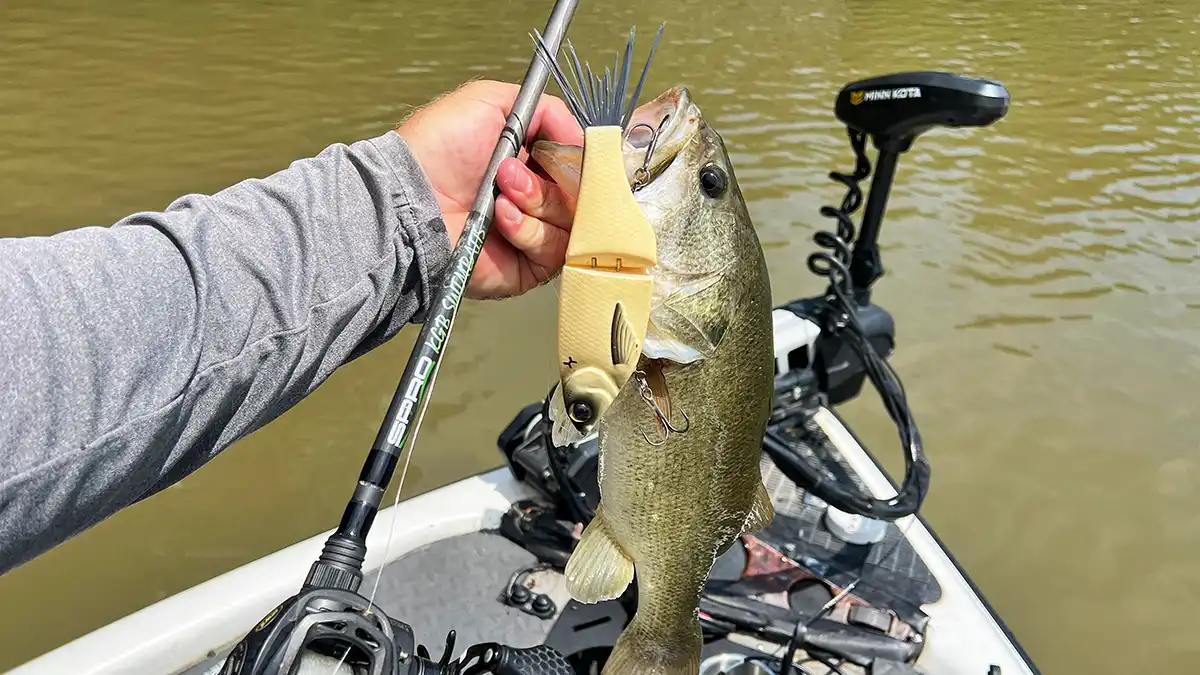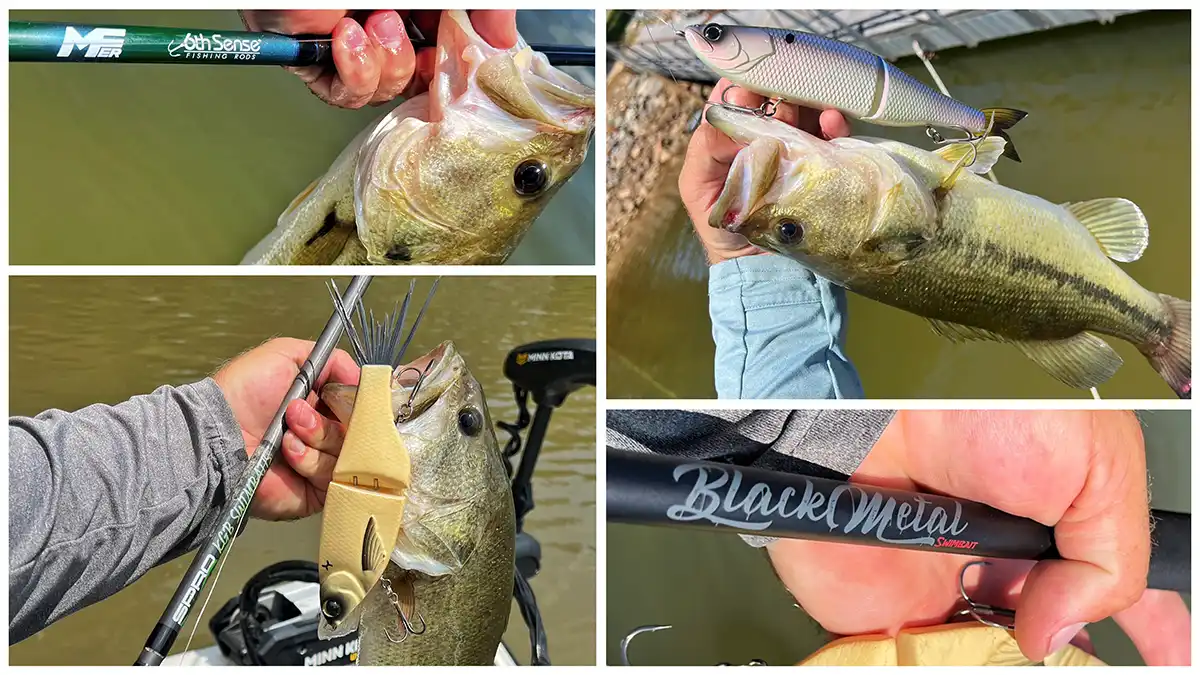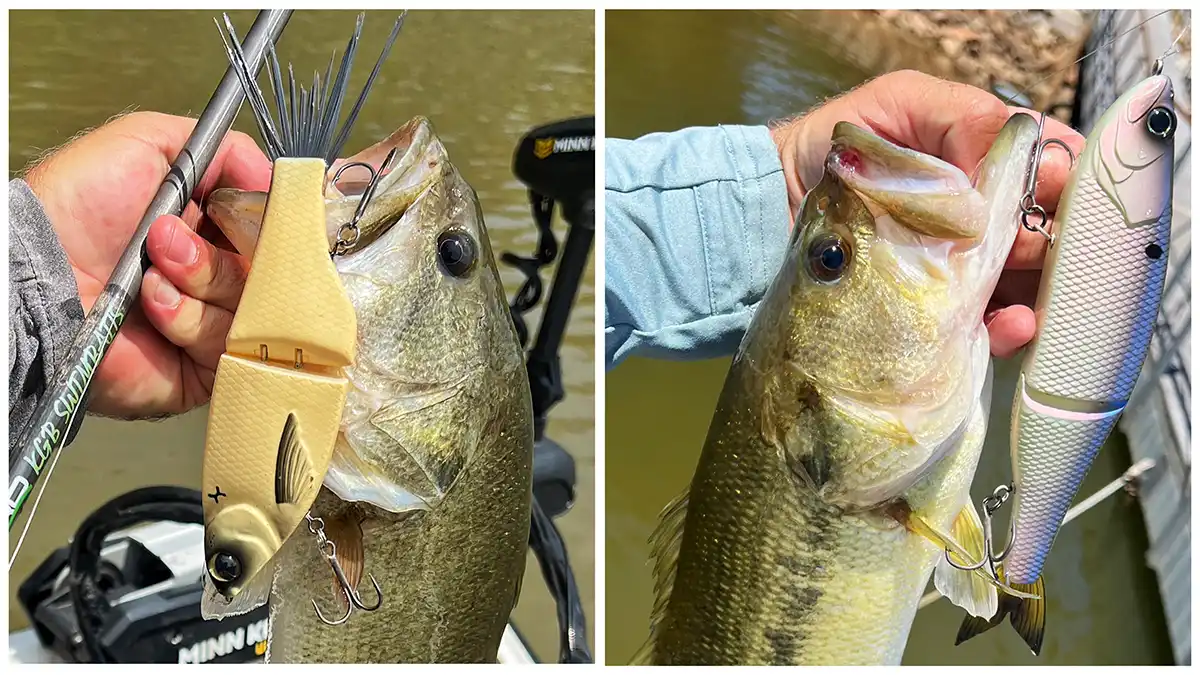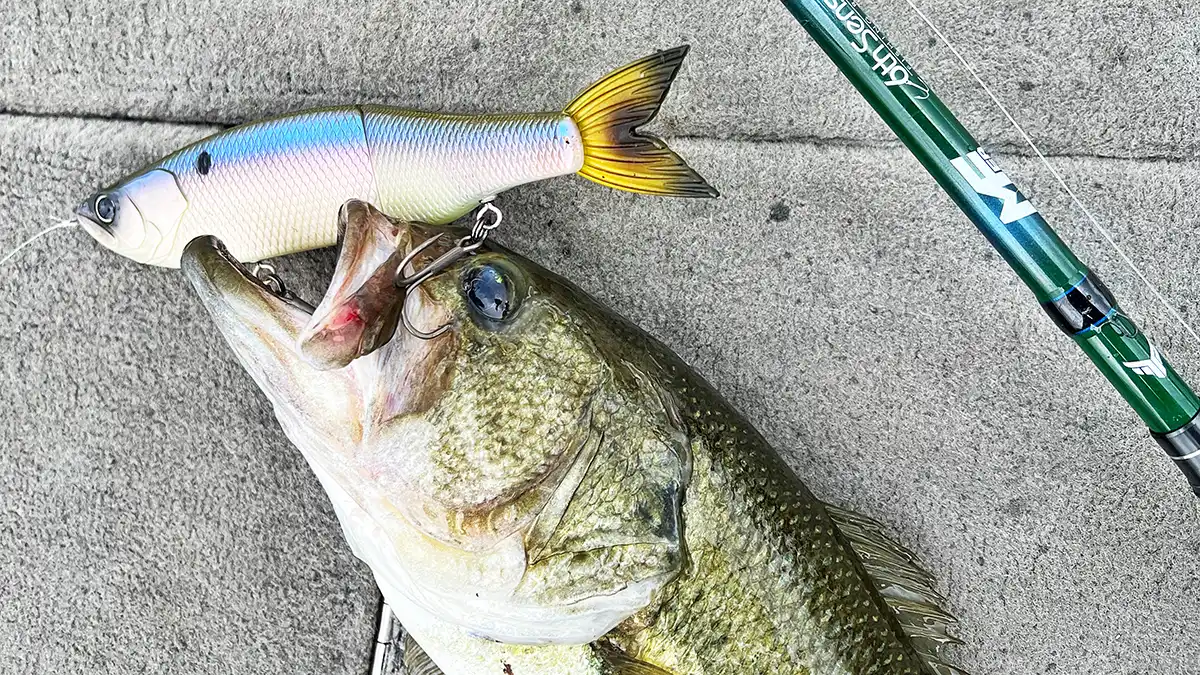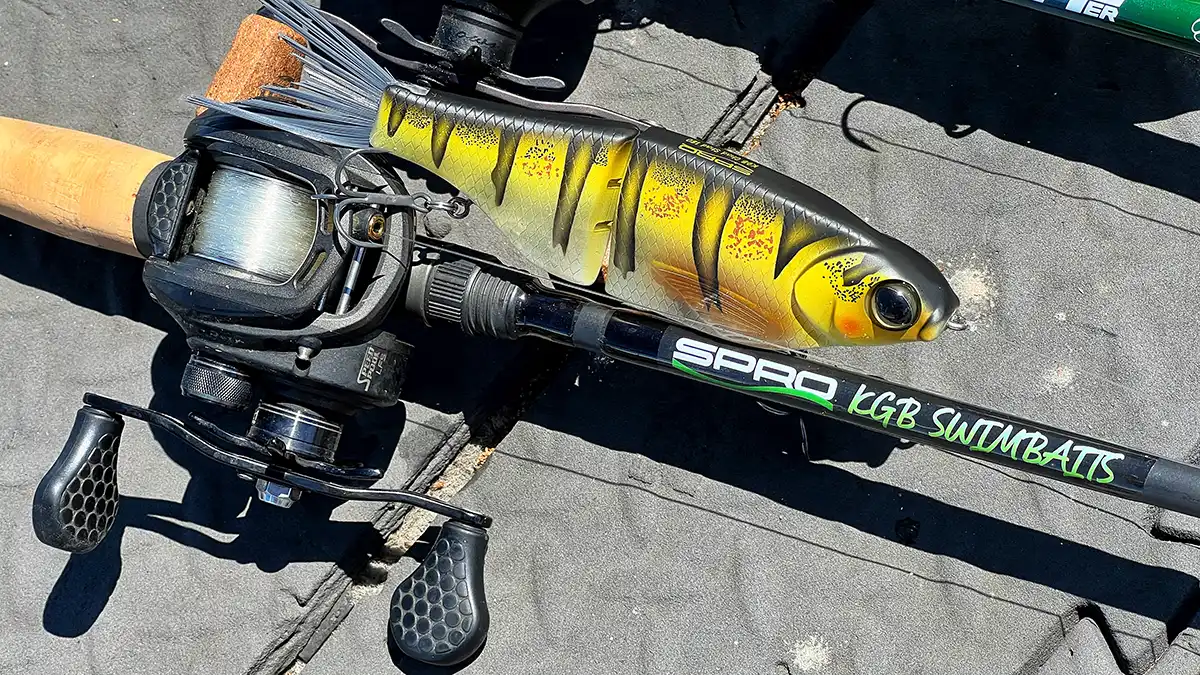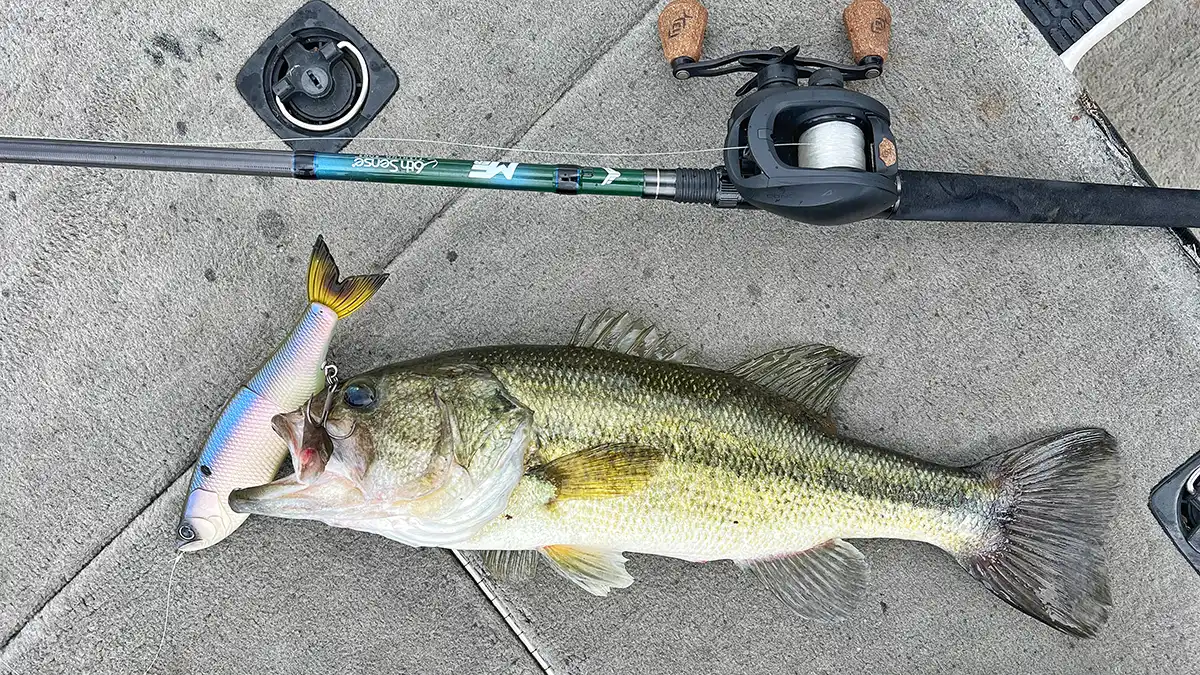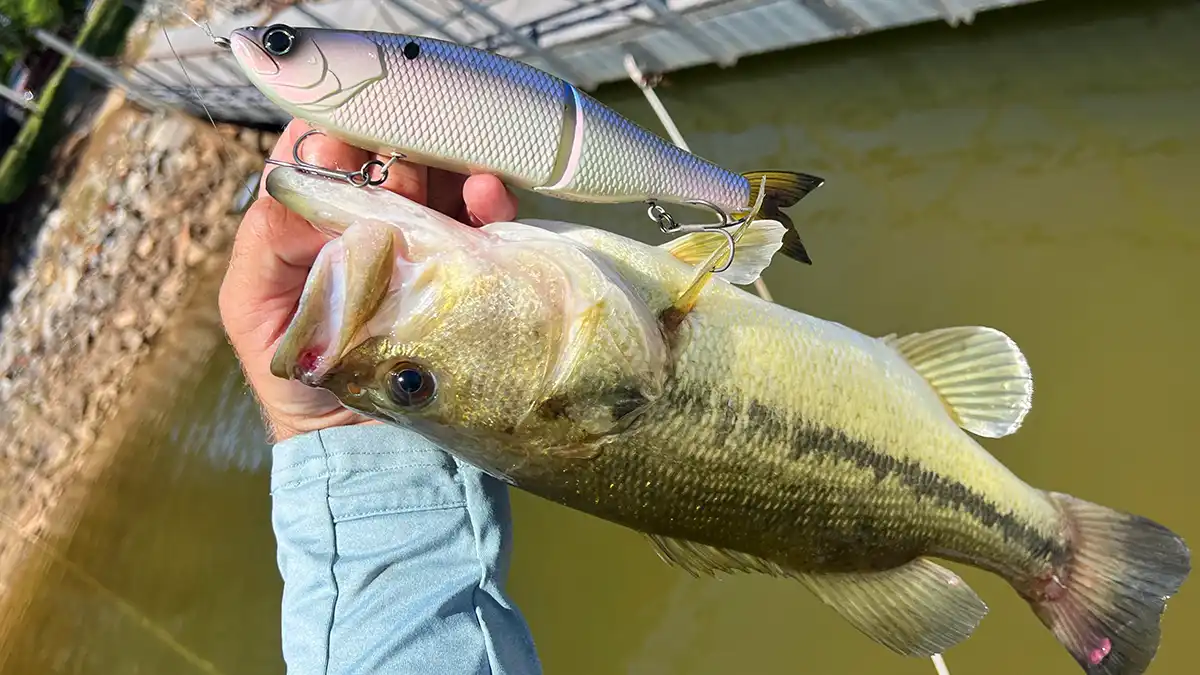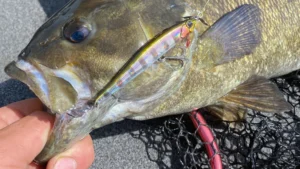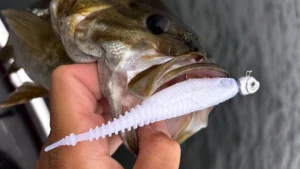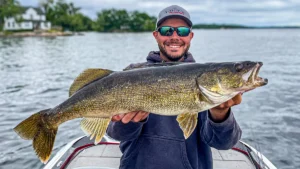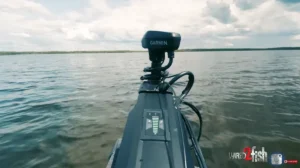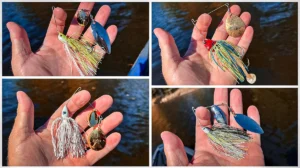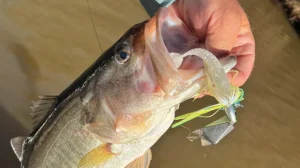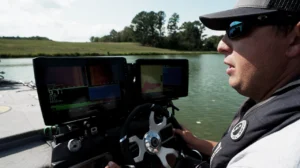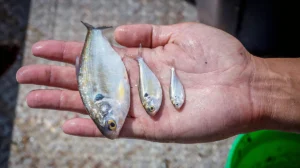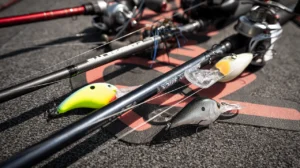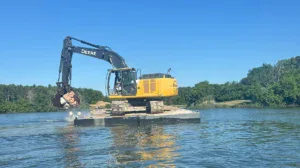“Glide bait” has become quite the buzzword in the fishing industry over the last five or six years. Prior to that, big swimbait fishing was more of a niche deal, something West Coast anglers and the occasional Texas or Florida trophy hunter did. These bigger baits were foreign to most of us, representing a type of fishing many thought unattainable. The price of the rods, reels and baits needed to fish this way were enough of a deterrent to keep most of us from even trying it on our “normal” fisheries.
However, there has been an explosion of social media content related to big bait fishing, from the likes of Ben Milliken and others. Professional anglers like Brandon Palaniuk, Chris Zaldain and Carl Jocumsen have found ways to incorporate these baits into how they make their living on “normal” fisheries across the country. There has been a steady increase in affordable, quality gear for this style of fishing as well. So now, what’s stopping you from trying a glide bait out for yourself?
That’s the question I found myself asking. Why wasn’t I exploring this way of fishing more? It looked like a lot of fun. The gear wasn’t outrageously expensive anymore. I knew there were guys catching good ones all over the country on these baits. So, why not? Thus, I did. For the last two months I dove into glide bait fishing.
I’ve loved it. I haven’t caught any giants, though I know that day is coming. I have caught some solid fish in the meantime and found that it doesn’t take a very big one to get a bite on a glide either. I have found some rods, reels and baits I really like and I’ve generally learned a lot. I’m here to pass that information along and, perhaps, get you fired up and equipped to try this type of fishing for yourself.
WHAT I LEARNED: FISHING A GLIDE BAIT
Over the last couple months, I’ve heaved, skipped, twitched, lobbed and chopped a glide bait quite a bit. Every outing I’ve been on has involved at least one glide bait and swimbait rod, if not multiples of each. This process has been an incredible amount of fun and I’ve been surprised by how short the learning curve has actually been.
I’ve caught fish off bed, caught fry guarders and caught quality fish on a glide on fisheries where I didn’t really expect fish to hit a glide and so on. I’ve had my hands on some of the best rods on the market for this kind of stuff and tested several different combinations of lines, rods and reels on them. I’ve put these outfits to the test to the best of my ability, so that I could offer you valuable input on the rods I like most.
To keep things fairly simple for the angler looking to get into glide bait fishing, I want to reduce glide baits down to two bait types: more elongated baits and taller baits. For illustration purposes, the 6th Sense Draw is a good example of a longer, thinner bait (belly to back). The SPRO KGB Chad Shad is a good example of a taller bait (belly to back).
These are the two baits I’ve thrown the majority of the time, and they behave very differently from one another. Each also requires a different combination of gear to fish it effectively, because of the differentiating weights of the baits. Their actions also make them work a little better with different gear as well.
When I talk more about gear in a moment, I’ll use the weights of the baits as the main divider for the rest of the conversation, using the 3-ounce mark to split the two groups of baits. I’ll exclude any baits over 7-ounces from this particular, beginner-oriented conversation. Before I get into the different gear, let’s take a quick look at the different actions of these two baits and when each works better.
DIFFERING ACTIONS OF BAIT TYPES
The action of the 7-inch SPRO KGB Chad Shad is quite different from that of the 9-inch Draw by 6th Sense. The Chad Shad has a much choppier action, where the longer, thinner Draw makes wider, sweeping glides. With little repetitive half turns of the reel I can scurry the Chad Shad along and then stall it if I want to too. The Chad Shad is able to coast back and forth a decent distance if I slow the pace. Where this bait really shines is in the fast, choppy motions.
The longer, thinner (belly to back) Draw has a wider glide to it. This bait performs better on a slower gear ratio reel, since it needs more time for it to coast from one side to the other. I can easily get this bait to glide 12 to 15 inches, where the taller Chad Shad stalls out at about half that distance.
Just looking at the two baits and not knowing much about lure design, my assumption is that the taller, lighter Chad Shad has more water resistance working against it and has less momentum since it’s lighter. Whereas the heavier, more aerodynamic Draw has less water resistance acting on it and is able to use its momentum to coast further.
Think of it like trying to throw a dart versus a paper airplane. Both are made to move forward, but one is heavier and has less forward-facing surface area for resistance to act on. This doesn’t make one bait unequivocally better than the other, but it does make each better in particular situations.
WHEN TO USE EACH GLIDE BAIT
I really like to use the Chad Shad when the fish are a little more aggressive, when I’m wanting to work the bait through dense cover and when I need to make accurate casts. The Draw works better when the fish are a little more lethargic, when trying to lure a bass in from a greater distance and when wanting to make longer casts.
The action of the Chad Shad seems to have a better effect on aggressive bass, spotted bass in particular. I think the size probably helps the bait appeal to spots more too. It’s also better for working through tight cover because its glide isn’t nearly as wide. It’s hard to walk a bait with a wide glide through laydowns with a bunch of limbs, without hanging up. Additionally, I’ve found that the Chad Shad will even swim through sparse water willow really well, where a wider gliding bait will hang continuously.
The casting side of things plays a big part in when to use each bait as well. This may have more to do with the weight of each bait than its profile. Shorter, more accurate casts are easier to achieve with the lighter Chad Shad. This is in part to the more manageable gear that you can use with this size bait.
If you go to heave a Chad Shad a long distance, you’ll find that it casts like a potato chip in the wind. You can throw it a long way, but the wind catches it and it spins like crazy, which creates annoying line twists after just a few bomb casts. I’m assuming this happens with all glides that have a similar profile to the Chad Shad. The heavier, more streamline Draw spins some in the air, but not nearly as much. Thus, I like the Draw better for bomb casts and the Chad Shad better in close quarters.
Additionally, the Draw has more “drawing power” to it, hence the name. A bigger bait like this with longer side-to-side glides has a larger presence in the water, it naturally moves through the water at a slower pace. This combination pulls fish in from farther away and gives them more time to find the bait. This not only makes the bait more appealing to cover-oriented fish that are in a bit of a funk–able to pull the bass away from the cover and convince it to eat–but it also naturally makes the Draw better for fishing broader areas like flats, points and ditches.
RECOMMENED GEAR: GLIDE BAITS UNDER 3-OUNCES
- BAIT: SPRO KGB Chad Shad 7”/2.4oz
- ROD: SPRO KGB Signature Series 7’9”, Heavy/Moderate
- REEL: Lew’s Super Duty LFS Speed Spool 7.5:1
- LINE: Seaguar InvizX Fluorocarbon 17lb
- *Rod honorable mention: F5 Black Metal 7’10” Swimbait Rod
The SPRO KGB Chad Shad has become very popular over the last few months. This relatively new bait came highly recommended as I polled friends on social media. SPRO generously sent out a couple of the baits for testing as well as one of the rods that was specifically designed for this size and style of glide bait–the SPRO KGB Signature Series 7’9” Casting Rod. The combination of this rod and lure is a thing of beauty. You can tell right away that each of these two products were designed with the other in mind.
The Chad Shad weighs 2.4 ounces and measures 7 inches. This rod handles this size bait very well and the bait responds beautifully to the moderate action of the rod. The heavy power of the rod also provides enough strength to cast a bait this size and haul the big bass in that bite it.
This has probably been my favorite swimbait rod that I’ve tested simply because it functions like a “normal” rod. What I mean by that is, it doesn’t feel like a big swimbait rod. Even with the long handle, I can still make little roll casts and gently and precisely lay the bait between pieces of cover, then effortlessly chop the bait back and forth with the reel, knowing the rod will load up nicely when I get a bite.
It’s not a super heavy rod to fish with like some of the bigger ones I have tested. However, the lure rating for this rod does max out at 3 ounces, so bigger rods will be necessary for bigger baits.
As for the reel, I found that a 200 size low profile reel is plenty enough reel for a bait this size. I kind of just assumed I’d have to throw all glide baits on a massive 300 size reel. However, that definitely hasn’t been the case, as the normal size Lew’s Super Duty LFS Speed Spool has done a fantastic job with this lure.
A lot of glide bait experts will also recommend slower gear ratio reels for baits like this, to help with the cadence of the lure. I honestly like the 7.5:1 Super Duty for this particular style of bait at least, because it allows me to chop the bait back and forth more comfortably with the faster reel. Seventeen pound fluorocarbon seemed like the best fit for this bait, though there’s nothing wrong with bumping up to 20 if that would make you feel more comfortable around heavy cover.
RECOMMENDED GEAR: GLIDE BAITS OVER 3-OUNCES
- BAIT: 6th Sense Draw 9”
- ROD: 6th Sense Milliken Casting Rod 7’9” Extra Heavy/Fast
- REEL: 13 Fishing Concept A3 6.3:1
- LINE: Seaguar InvizX Fluorocarbon 20lb
- *Rod honorable mention: Shimano Curado Casting Rod 7’8” Extra Heavy
- *Rod honorable mention: F5 Ghost Code Swimbait Rod 8’ Moderate Fast
The 6th Sense Milliken Casting Rod 7’9” is one heck of a rod for the price. For a swimbait rod that can handle a bait up to 7 ounces, $139 is a steal. Considering it was designed by Ben Milliken, one of the best professional big bait fishermen in the game right now, it’s one you have to try.
The 3.75-ounce Draw is the bait I’ve been using to test all of my bigger swimbait rods. This rod has handled the bait well, able to load up under its weight and still lob it out with little effort and no concern of the rod failing. I like the full-length, tapered EVA foam handle and the open lure keeper and smaller guides.
It’s a little heavier than the SPRO KGB rod and the F5 Black Metal Swimbait Rod, but that’s an apples-to-oranges comparison since this rod is built to carry twice the load of those other two. It is definitely more stiff too, with a heavy power and fast action, but again, that’s kind of the nature of the beast if you want to lob a half-pound bait around. All in all, I’ve been very pleased with the 6th Sense Milliken 7’9” for purposes of throwing glides over 3 ounces.
IN CONCLUSION
The takeaway: glide baits are a lot of fun to fish with. The baits and the gear needed to throw them are all more affordable than ever before. We all know now that bass will bite these baits all over the country. So, what’s stopping you from trying out glide bait fishing yourself?
I, for one, am glad I did. I’ve really enjoyed fishing these baits consistently the last couple months and I’m confident a glide bait is an addition to my arsenal that won’t go away. There’s something about the appeal of a glide bait to big bass that just sets it in a league all its own. I’m enjoying unlocking this bite and I’m confident you will too.
